When Teslas lose power, crashes can turn into deadly races against time.
By Dana Hull, Emily Chang and Kara Carlson, September 10, 2025 at 5:00 AM EDT
(This story was originally published Sept. 10. On Sept. 16, the US National Highway Traffic Safety Administration said it opened a defect investigation into certain Tesla Model Y door handles. On Sept. 17, Tesla's chief designer said the company is working on a redesign of its door handles.)
Max Walsh spotted the plume of smoke just as an emergency alert flashed on his smartwatch: vehicle fire with entrapment. Less than a minute later, the off-duty firefighter pulled up to a busy intersection in northern Virginia, where a Tesla Model Y lay crumpled and aflame against a utility pole.
Having responded to electric vehicle fires before, Walsh knew what he was up against: electrically powered doors that may not function after a crash, manual releases that can be hard to find and battery cells that burn more intensely than gasoline. Every second mattered.
He sprinted to the SUV. The driver’s door wouldn’t open, but the window was cracked. Walsh smashed it with his bare hands and reached inside, burning himself in the process. “I’m trying to open the door and it’s like, ‘What the hell, where is the backup thing?’” Unable to find the mechanical release, he and a friend pulled the dazed driver, Venkateswara Pasumarti, up and out through the window frame.
“Who else is in the car?” Walsh yelled.
Pasumarti managed one word: “wife.”
Susmita Maddi was pinned by air bags in the passenger seat, flames entering the cabin, the car’s electrical system dead, the doors not opening. Bystanders pounded on the glass as the smoke thickened. By the time rescuers arrived with hydraulic cutters, Maddi had inhaled enough fumes to do lasting damage to her lungs and suffered third-degree burns to her face.
“It’s the most horrible thing, to see a human burning,” Walsh said in a recent interview recounting the December 2023 crash. “If I was able to open the doors, I could have gotten them both out before the fire department even got there.”
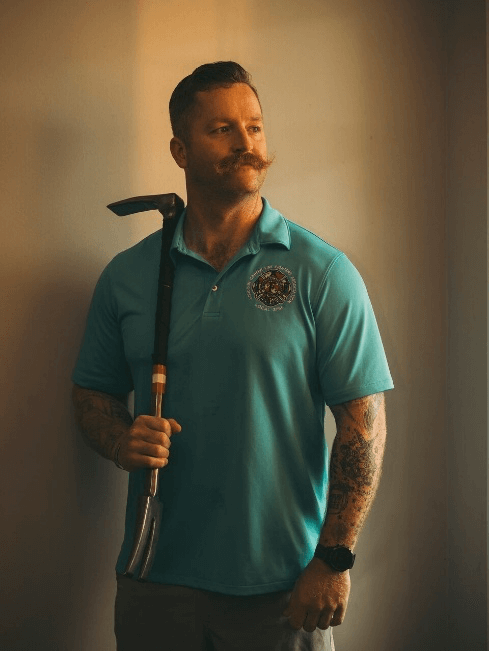
Max Walsh, the off-duty firefighter who helped rescue Venkateswara Pasumarti and Susmita Maddi, holding an extraction tool at his house in Virginia on Aug. 21. Photographer: Greg Kahn/Bloomberg
Under Chief Executive Officer Elon Musk, Tesla has built its reputation — and much of its trillion-dollar market value — on pathbreaking design, engineering excellence and an exceptional safety record. The company posted recently on X: “If you love them, put them in a Tesla.”
But whereas Teslas fare well in government-administered crash tests, certain hallmarks of its vehicles — flush door handles, electrical power, mechanical releases — are flummoxing occupants and first responders. This can turn moments after crashes into deadly races against time.
The Virginia crash is one of a string of incidents exposing this paradox. Last November in California, a Tesla Cybertruck slammed into a tree and a wall and caught fire, killing three college students trapped inside. The same month, in Wisconsin, a Model S fire left five dead, with a cluster of bodies in the front seats suggesting to a detective there may have been a struggle to escape. In Los Angeles this spring, an All-American basketball player survived a Cybertruck crash by kicking through a window before bystanders pulled him out by his legs.
Authorities have been slow to catch up. In China, a top regulator is reportedly considering a ban on fully concealed door handles. Europe has taken incremental measures to improve post-crash rescue and extrication protocols. In the US, there’s been little action, although the National Highway Traffic Safety Administration told Bloomberg News it’s aware of the incidents in this article, as well as complaints about Tesla’s doors that have piled up in the federal agency’s database. Part of the problem: Crash tests are designed to measure impact survivability, not whether occupants can quickly get out of the vehicle afterward.
“Tesla engineers went wildly in the direction of automation and overlooked what happens to the human body after a crash,” says Charles Mauro, founder of Mauro Usability Science, a New York consulting firm that specializes in human factors engineering. “Musk’s idea is a computer on wheels, but the design of the door locks was overlooked.”
Door Design
The original design brief for the first model Tesla built from the ground up called for a sleek sedan that disposed of conventions for internal combustion engine cars. The flat surfaces of the Model S, which debuted in 2012, improved aerodynamics and reduced wind noise — important attributes for boosting range and minimizing any whirs and whistles an engine would drown out.
This lack of curvature in Tesla’s doors meant less space for the motors and electrical components like those powering the windows, locking systems and handles, according to people familiar with their design, who asked not to be identified because they weren’t authorized to speak publicly. Instead, Tesla engineers opted for wire-release mechanisms for unlocking the doors in emergencies, one of the people said.
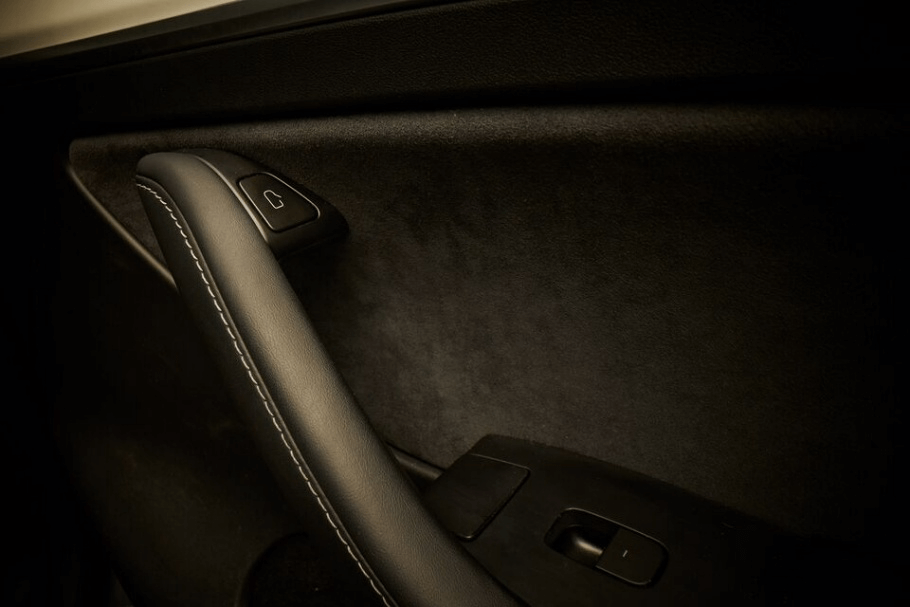
The interior of a 2023 Tesla Model Y. The top button opens the door. The manual release is between the button and the power window switch. Photographer: Sarah Anne Ward/Bloomberg
Similar designs have carried through in all Tesla vehicles on the market, including the Cybertruck, which has even less space inside the door to fit components, this person said. The Cybertruck was the first Tesla to do away with handles entirely — the doors open from the outside using buttons next to the bottom corners of the windows.
Where Tesla places manual releases differs by model. In the Model S, for example, manual release cables are located under the carpet below the front of the rear seats. The company spells out where the releases are and how to use them in owner’s manuals, and in the last few years has ensured that occupants in the second row have a way to open doors with no power.
Some earlier iterations of Tesla’s top-selling vehicles lack manual releases for the rear doors, manuals show. This was the case for the Model 3 from the sedan’s introduction in 2017 through the 2023 model year. The company also says that not all Model Ys were equipped with manual releases for the rear doors from 2020 through the 2024 model year — a period when the SUV ranked among the best-selling vehicles in the world.
How to Manually Open Doors From Inside Teslas Without Power
Model S, X, 3, Y, Cybertruck
Opening the Front Doors
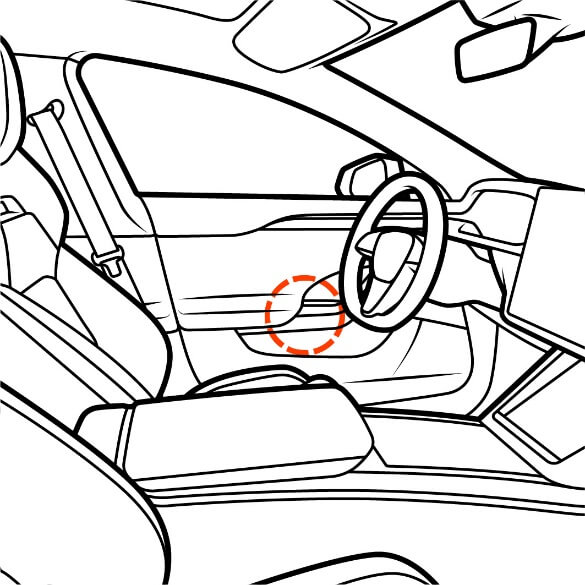
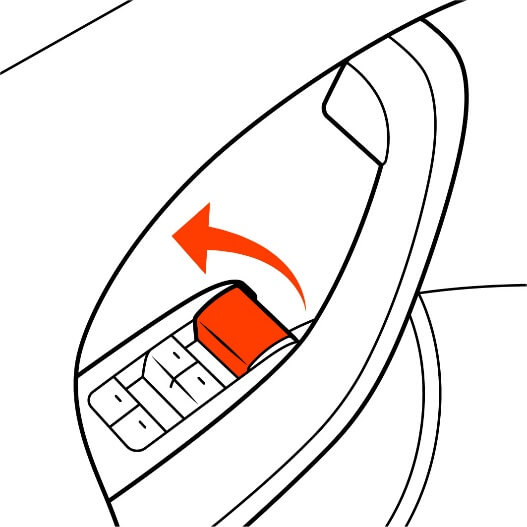
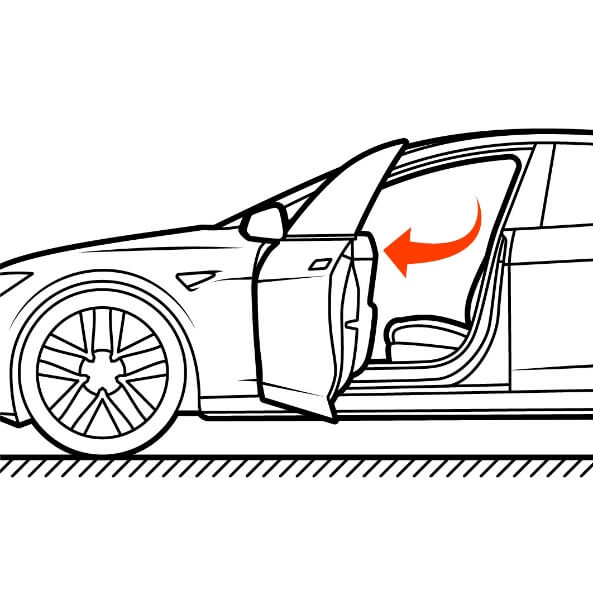
(1) Locate the manual release lever in front of the window switches, and (2) pull up to open the door.
Opening the Rear Doors

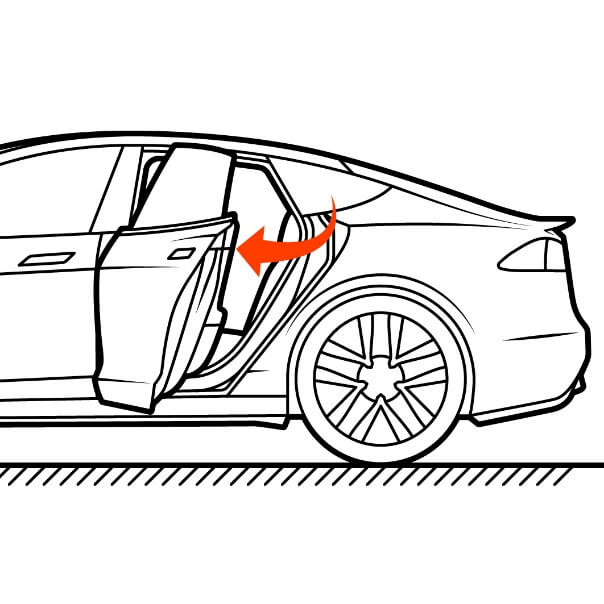
(1) Locate the manual release on the base of the seat and (2) pull back any carpeting or floor mats. (3) Find the mechanical release cable and pull the tab on the end towards the center of the car to open the door. Illustration: Chris Philpot; Source: Tesla’s latest US owner’s manuals
“If you are a passenger, or jump into a rental car or a Model Y that is a robotaxi, you are not going to be aware of this,” said Michael Brooks, executive director of the Center for Auto Safety, a Washington-based advocacy group. “It shouldn’t be a game of hide-and-seek.”
Trouble opening Tesla’s doors dates back to the early days of the Model S. An otherwise positive New York Times review published in September 2012 described opening the sedan’s doors as a multistep process that sometimes required several attempts. “Tesla sometimes takes its urge to reinvent too far,” the author wrote.
Musk acknowledged door difficulties when asked during a May 2013 earnings call whether there were common problems leading owners to take their sedans in for service.
“We’ve got quite a fancy door handle, and occasionally the sensor would malfunction,” the CEO said. “So you’d pull on the door handle, and it wouldn’t open. Obviously, it’s quite vexing for a customer.”
Musk then suggested that Tesla had addressed the issue. “Essentially the door-handle incidents have gone to virtually zero,” he told analysts.
In reality, Tesla’s difficulties were far from over. The company redesigned its door handles several times and became the butt of jokes even among enthusiasts.
“As you know, you are not a true Tesla Model S owner until your car has been on a flatbed, or one of your handles has developed an issue where you could no longer enter the vehicle,” Rich Benoit, a YouTuber with 1.6 million subscribers, joked in a 2018 overview of common failures.
Musk has made few recent public comments about Tesla’s doors. He and other company executives didn’t respond to Bloomberg’s inquiries and requests for comment.
Glitches aside, flush handles initially set Teslas apart. They became standard fare on EVs rolled out by many of the company’s competitors.
Copycatting Tesla has undermined car brands’ standings with their own customers. When J.D. Power’s annual Initial Quality Study reported a record high number of problems per US vehicle in 2023, the market researcher referred to door handles as “a percolating problem area.” Seven of the 10 most problematic models, in this respect, were EVs (J.D. Power didn’t single out the models by name).
Complaints about Tesla’s electrically powered doors also pervade NHTSA’s database that the agency uses to identify potential defects. Bloomberg identified more than 140 consumer complaints related to Tesla’s doors getting stuck, not opening or otherwise malfunctioning since 2018. While it’s difficult to assess how that compares with other models with similar doors, the regulator has taken notice.
Regulator Has Received Complaints About Tesla's Doors For Years
Consumers have reported their pets, children and elderly parents have been trapped inside their cars.
May 31, 2025 SAFETY HARBOR, FL 2022 Model Y
NHTSAID 11665554
The low voltage battery went out after the rear right door
was opened to put children in car seats.Once my younger
child was buckled up, I closed the door to come over to the
other side the buckle in my older child into car seat. The
door would not open. The phone application would not get the
car to unlock the doors. I could not open any of the doors.
Children were trapped inside. My oldest child was not yet
buckled and I was able to instruct her to crawl to the front
and try opening both doors with the electronic button, which
did not work. I then instructed her to use the mechanical
door latch vs the electronic and she got the door open. Had
it not been for the fact that she was still unbuckled she
would not have been able to get to the front to open the
doors. I would have needed to call 911 for help getting the
kids out as the car was unresponsive.
Source: National Highway Traffic Safety Administration Note: Complaints have been edited for clarity and length. Click identification numbers to read complaints in full on NHTSA’s website.
NHTSA told Bloomberg that it’s aware of the incidents cited in this article and is in communication with Tesla to gather additional data and determine whether a full investigation is warranted. The regulator said in an emailed response to questions that it continually analyzes consumer complaints and will not hesitate to act to protect public safety.
The agency played a role in Ford and Fisker recalling EVs to fix defects related to their vehicles’ door handles. It’s also conducting an investigation into Dodge Journey SUVs following a single incident of alleged occupant entrapment that resulted in a fatality.
Unable to Escape

Krysta Tsukahara Courtesy: Tsukahara Family
Two days before Thanksgiving last year, Krysta Tsukahara was excited to be home from college. After dinner at the kitchen counter with her family in Piedmont, an affluent community east of San Francisco, she met up with high school friends at a house party.
Around 3 a.m., Tsukahara and three other friends piled into a Tesla Cybertruck. Matt Riordan and another friend followed behind in a separate car for the short drive to a second house in the neighborhood.
On the way, the Cybertruck careened around a curve, went off the road and crashed into a tree and a retaining wall, wedging between the two and catching on fire.
Riordan turned the corner and saw the Cybertruck engulfed in flames, with his four friends inside. He repeatedly pressed the buttons on the front and rear passenger doors, but neither opened. He grabbed a tree branch to bash open the front window and managed to drag the front passenger to safety.
During a recent deposition, Riordan said he could hear Tsukahara screaming for help from the backseat. He yelled for her to come up to the front passenger seat and she tried, getting
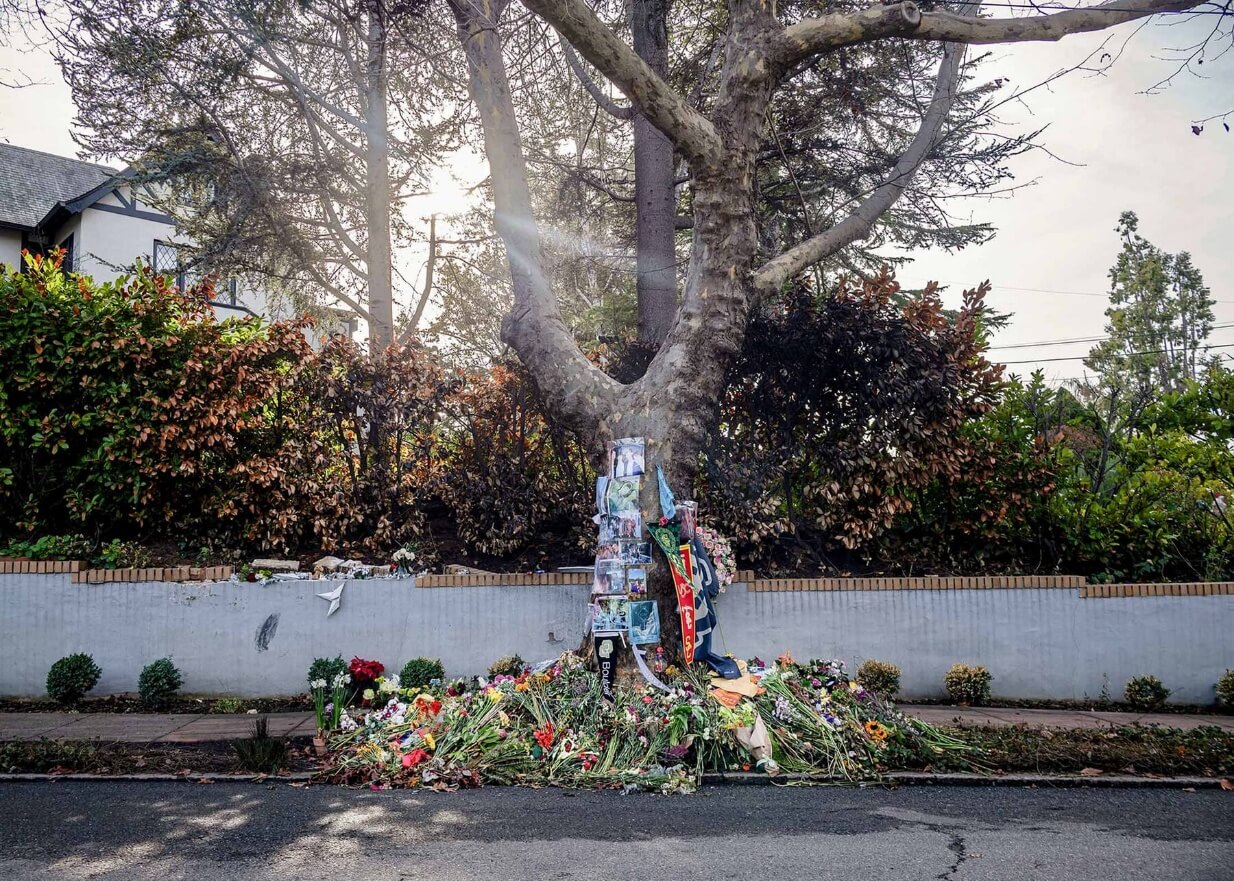
A memorial for the three college students who died in a Cybertruck after a November 2024 crash in Piedmont, California. Photographer: David Paul Morris/Bloomberg
Tsukahara's parents, Carl and Noelle, are seeking more answers by filing a wrongful death lawsuit against the driver’s family. In an interview with Bloomberg at their Piedmont home, they spoke about questions that haunt them: Why did the truck catch fire? Why didn’t the doors work? Why couldn’t Krysta get out?
Other cases have raised questions about the operability of Tesla’s doors.
In a crash that took place in the same month last year, a Model S in Wisconsin hit a tree and caught fire. In a 65-page report, a Dane County Sheriff’s Office detective said that a reoccurring point of concern in the investigation was why the five occupants of the vehicle were unable to escape. “It appeared as though they were trying to get out as four of the five bodies were found in the front seat of the vehicle,” the detective wrote.
In April, Alijah Arenas, the son of former NBA All-Star Gilbert Arenas, was hospitalized after crashing his Cybertruck in Los Angeles. “I try to open the door, and the door’s not opening,” Arenas recounted in a June press conference. He kicked through one of the pickup’s windows, was pulled out by bystanders and later put into a medically induced coma due to extreme smoke inhalation. He was released several days later.
Trapped Child
Many of the complaints Tesla owners have registered with NHTSA tied to its doors have to do with a related issue: a dead battery.
Teslas have two batteries: a low-voltage pack that operates systems like windows, doors and the touchscreen, and the high-voltage pack that propels the car. If the low-voltage battery dies or is disabled, the doors may not unlock, and must be operated manually from the inside.
“When you lose 12-volt power, there’s no way to get out unless you know or understand how to reach for that emergency latch,” says Randy Schmitz, a Calgary firefighter who chairs the Alberta Vehicle Extrication Association.
This issue can be especially acute when there are people with disabilities, pets, young children or elderly passengers in the car.
Last Halloween, Dakota Knox buckled her daughter into her car seat in the family’s Model 3 and closed the door. Salem, who was wearing a lime green Tinker Bell costume, was about 18 months old at the time. As Knox and her husband went to get into the front seats, the car doors wouldn’t open.
“We shut the door, and a millisecond later the 12-volt battery died,” Knox says in an interview. Her daughter was stuck.
Knox called 911, and while the police quickly responded, they didn’t know how to open the doors, either. They were nervous that breaking the glass could send shards flying into the toddler’s eyes or mouth.
Salem was hyperventilating, crying, screaming. “She didn’t understand why there were strangers looking in the windows, why we weren’t just opening the door.”
Knox called Tesla, which she says initially quoted a six- to eight-hour wait for a tow truck. While the company managed to dispatch someone sooner, she said the tow-truck driver then offered to pull the vehicle with Salem still in it.
Knox, her husband and the first responders turned to Google and YouTube for information about where Tesla’s emergency releases are and how to use them. The police ended up snaking a lockout tool through the backseat window, which was cracked open, toward the driver’s door release and opened it.
Roughly two hours after being trapped, they managed to break Salem free.
Road to Recovery
Pasumarti, 49, and Maddi, 43, have lived for years not far from the site of their December 2023 crash in Leesburg, Virginia. Teslas are a common sight in the Washington exurb, which is home to a burgeoning tech sector. Pasumarti works in IT and cloud computing; Maddi is a software engineer.
They bought the blue sport utility vehicle only months earlier, due in part to its stellar crash ratings. Tesla delivered 1.22 million Model Ys that year, making it the world’s best-selling vehicle.
During a recent interview in their home in Virginia, the couple recounted a routine Saturday of lunch with friends and a few errands before the drive that changed the course of their lives.

Susmita Maddi and Venkateswara Pasumarti photographed in their home in Virginia, on July 31. Maddi was severely burned when she was trapped inside the Tesla her husband crashed. Photographer: Greg Kahn/Bloomberg
On their way home around 5:30 p.m., Pasumarti had an epileptic seizure and lost control of the Model Y. He appeared to run a red light, swerved off the roadway and crashed into the utility pole, according to witness testimony included in police reports obtained by Bloomberg. Pasumarti says he has no memory of the incident. He only remembers slowly waking up in the hospital, and a nurse asking him if he knew where he was. He didn’t.
Pasumarti learned that he was at a MedStar hospital in Washington. Maddi was in another room, intubated and on a ventilator that she would need to help her breathe for roughly 45 days in the intensive-care unit, only vaguely aware of the friends and relatives who visited. Her mother flew in from India for four months.
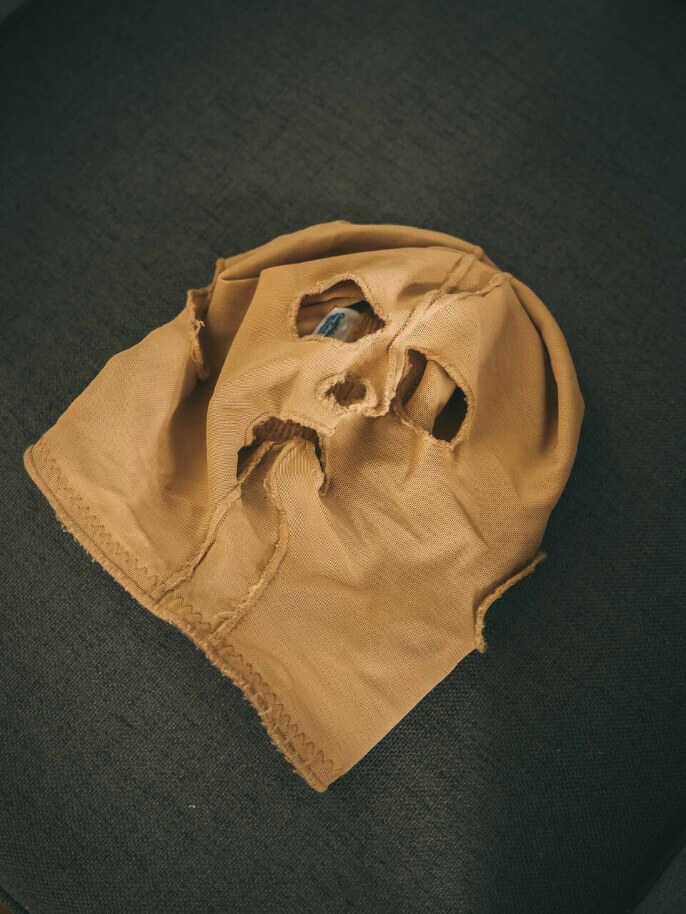
The mask Susmita Maddi wore home from the hospital after being treated for severe burns sustained while trapped in a burning Tesla. Photographer: Greg Kahn/Bloomberg
A tight-fitting, custom-made mask covered her entire face to help her heal from the severe burns.
In June, Maddi sued Tesla for damages and past and future medical expenses. She alleges that Tesla’s doors pose an unreasonable safety risk.
“The vehicle’s door handles and locking system were defectively designed which prevented rescuers from extracting the occupants,” reads the complaint, which was filed in Travis County District Court in Austin.
In its response to the suit, Tesla says the Model Y that Pasumarti crashed complied with all applicable federal safety standards.
After multiple surgeries, including skin grafting for her face, Maddi is still recovering. She struggles with nerve pain and a nagging cough linked to the smoke she inhaled while trapped.
She knows she’s lucky to be alive, but the recovery process will take years. Another reconstructive surgery is planned for October.
“Sometimes it is very depressing to see my face,” she says. “Who is this? I wouldn’t recognize myself. Is this what I am now? It took many months and many nights of crying to come to this stage.”
The crash derailed a yearslong effort Maddi and Pasumarti had embarked on to adopt a child. They had completed much of the lengthy process — a social worker had interviewed them in their home, paperwork was filled out.
That dream is now on indefinite hold.
“Buying a Tesla was the worst decision of our life,” Maddi says.
— With reporting assistance from Ed Ludlow, Gabrielle Coppola, and Keith Naughton
Original Article LINK

